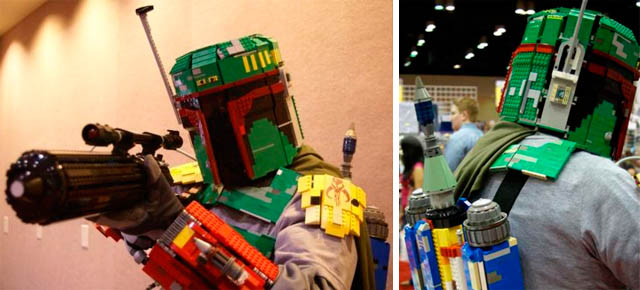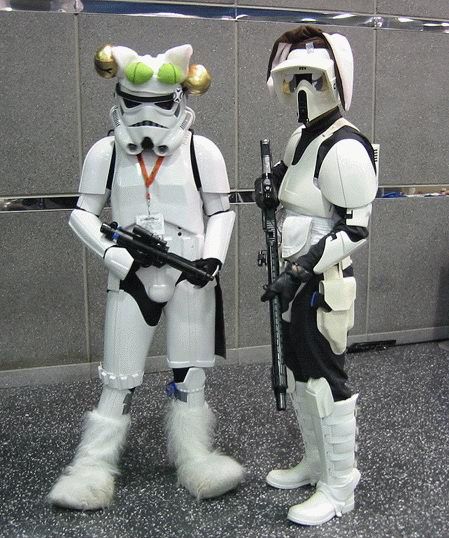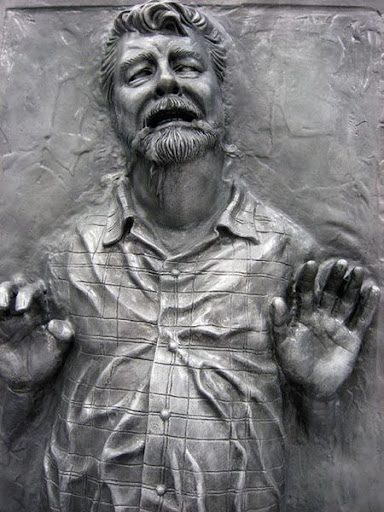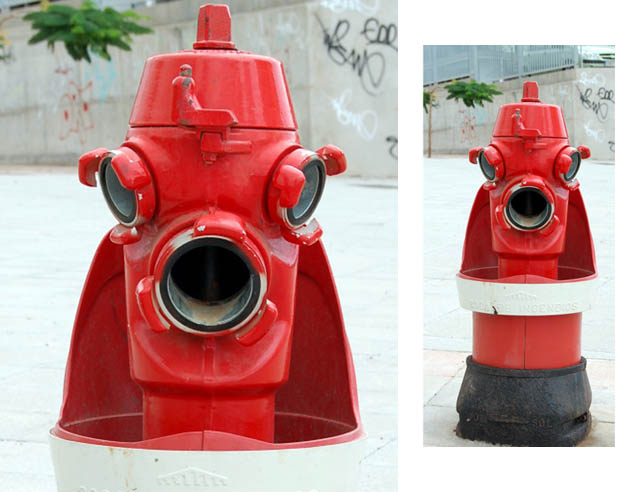Give him some honey and make Winnie the Pooh smile!
Let's color this cutest Winnie The Pooh Coloring Pages
[via]
PRIN THIS PAGE
 "QUANTUM SHOT" #581 "QUANTUM SHOT" #581Link - by A. Abrams and Walyou The original glamorous large-scale space adventure refuses to die It's time we wrote about Star Wars Craze again (see our coverage in Part 1 and Part 2). Many utterly mind-boggling art pieces and original creations saw the light of day since our last round-up, and many devoted fans sent us great pieces of trivia and images that we simply can not ignore. Besides... the fundamental story of Good and Evil, questions of destiny and personal redemption remain strong in this "space opera" franchise, even though they were significantly diluted recently by light-weight and cheesy offerings. We'll start with the poster that is not that well-known: 1978 Japanese dub version, featuring the Millennium Falcon in all its glory -  (image via) The proto-dewback rider from 1975 science fiction magazine art by Ron Cobb. This was an inpiration for classic Star Wars lizards -  art by Ron Cobb, 1975, image via Also don't miss a pile of almost-lost (newly-discovered) original concept art by Ralph McQuarrie! This is for example, an unused promotional T-shirt design and a poster based on original McQuarrie concepts (see some more here)  (images via) Star Wars Sketchbook is also worth seeking out, as it compiles early (mostly 1977) concepts for spaceships and vehicle designs, made by Joe Johnstone:  (image credit: Joe Johnstone) Speaking about matte painting and concept art, absolutely gorgeous Star Wars panoramas (by Yanick Dusseault) can be found here... Simply mind-blowing! Click to see an example... Star Wars superimposed over scenes of Paris (work by Cedric Delsaux) gain something in atmosphere, see for yourself -  On artist site you can see the whole series (click past "next" and "news" and look for "The Dark Lens" option):  (images credit: Cedric Delsaux) This promotional series for Disney Star Wars Weekends really catches the eye - see more at this page.      (images via) Gadgets, Goodies and Appliances This section was compiled thanks to material from a neat little "Gadget News" site - Walyou. Here is what they dug up recently: "Millennium Falcon" PC case mod (made by Russ Caslis) -  (image credit: mods.xkill) Darth Vader Toaster - more info - for Imperial morning ritual:  (image credit: Reghardware, right - fragment of work by Waihey) Star Wars Matryoshka Dolls (made by Matt Brown) - more info:  (image credit: Matt Brown) Check out Brothers Brick LEGO diorama masterpiece:  (image credit: Brothers Brick) Boba Fett's armor (full-size!) made out of LEGO:  (images via) Star Wars + LEGO + chess = irresistible set:  (image credit: Anthony Scanzani) Sophisticated Star Wars paper craft (with full schematics how to make it out of a sheet of paper) - see more here:  (image via) Also read on Walyou about Star Wars Tauntaun Sleeping Bag and Darth Vader's gas mask.  (images via)  (image credit: ) According to Newton's Second Law of Motion: Force = Mass x Acceleration. The sign above was made by SoadyPopDesigns, order it here.  (originals unknown)  (image credit: Heave105)  (image via) Jabba, the Early Years:  nice Photoshop job by Sebastian Niedlich Star Wars as classic art - more here:   (images via) Star Wars / Disney mashup, lovingly made by Thumper. Shown here is "Snow White and the Seven Stormtroopers":  (image credit: http://thumper-001.deviantart.com/art/Snow-White-n-7-Stormtroopers-72009594) George Lucas is stuck in a "writer's block" in carbonite -  (image credit: Bonnie Burton, Starwars.com) The image above is from Star Wars Celebration Japan (30th anniversary of Star Wars, brought by Lucasfilm to Tokyo). There were other curiosities, for example, the chubby Trooper, and various ridiculously painted Vader helmets (part of the The Vader Project):  (images credit: Bonnie Burton, Starwars.com) Star Wars Fire Hydrant:  (photo sent in by Alex Dreher, Teneriffe) Some very Darth Vader-like helmet styles were used during the Iraq War in 2003 by the Fedayeen volunteers (the engraved text reads "Allah, Al Watan, the Ghatadz" - Allah, Country, and Leader)   (image credit: J. Neil) Demonstrators know how to intimidate police (this photo is from G20 Summit in London, 2009) -  (photo credit: Andy Rain, EPA)  (original unknown) Two powerful images concerning Darth Vader - the one on the left is called "Dark Leia (Daddy's Little Girl)" and could've happened in some alternative universe. The picture on the right is even more emotionally powerful. It's called "Grief"... clearly showing Anakin's loss, tragically poor choices and ruined life spent in the lust for power.  Left: art by Miravi - Right: art by Joe Corroney and Brian Miller Some material for this article was collected by Eran Abramson from Walyou, a neat site about various gadgets ALSO READ PART TWO! -> DON'T MISS PART ONE! ->  Permanent Link... Permanent Link... ...+StumbleUpon ...+StumbleUpon  ...+Facebook ...+Facebook |
 "QUANTUM SHOT" #581 "QUANTUM SHOT" #581Link - article by Simon Rose Good signs will help you remember which pubs you visited, what you did there, and is it safe to return Everyone loves the idea of the cozy pub with its dark wooden beams, dark wood and cozy fireplace, even though the traditional British pub has been in decline in recent years. However, pubs and their distinctive signs are often cited as one of the main things people want to see preserved in our ever-changing world.  (images via 1, 2, 3)   (images via 1, 2, 3, 4) Telling a pub sign history is perhaps the safest way to start up a conversation Britain’s colourful pub signs speak volumes about the country’s equally colourful history, as well as depicting folklore, heraldry and social customs. Pubs were never named by accident and each sign invariably has a story behind it. The artwork on Britain’s pub signs is inspired by royalty and nobility, religion and the church, military heroes and battles, occupations and trades, myths and legends, sporting activities and pastimes, along with numerous other sources.  Sign relates to a nearby stone. It has a hole in it which one can blow through... for fun? (images via 1, 2) In 2007, the top ten most popular names for pubs in the UK were Crown (704) Red Lion (668) Royal Oak (541) Swan (451) White Hart (431) Railway (420) Plough (413) White Horse (379) Bell (378) New Inn (372). This article does not aim to mention every single pub in the UK, or every one with an unusual name, but delves into the history of pub signs, the stories behind them and examines some of the interesting names I discovered in the course of my research.  (images via 1, 2) The Romans first took the basic concept of the pub to Britain in 43 AD. In Rome, it was traditional for landlords to hang branches of vine leaves outside their premises to indicate the trade that was practiced within. However, with vines lacking in Britain, they hung any type of evergreen plant over the door and there are pubs in the UK called the Bush or Holly Bush to this day. The Romans built an extensive road network and with large numbers of troops moving around the country, roadside inns opened at suitable stopping points. Some modern roads still follow the route of these ancient highways, so it’s entirely plausible that some inns have been on the same site ever since the Roman era. "Ye Olde Trip to Jerusalem" starts with a pint By the twelfth century, people were traveling the country visiting cathedral towns on pilgrimage, such as to the shrine of Thomas Beckett in Canterbury. Chaucer’s pilgrims in the Canterbury Tales began their journey at the Tabard, a real inn located in London. Other inns and taverns catered to pilgrims and knights on their way to the Crusades in the Holy Land. Ye Olde Trip to Jerusalem, established in 1189, claims to be the oldest inn pub in England and has cellars which are carved from the rocks beneath Nottingham Castle.  (images via 1, 2) Pub signs on the same theme are the Saracen’s Head and the Lamb and Flag, the flag representing the crusaders, with Jesus as the lamb. Another sign related to an event in the medieval period is at the Magna Carta pub in Lincoln. The Bishop of Lincoln was one of the signatories to the famous document in 1215 and for centuries one of the four remaining copies was kept at the cathedral, before being put on display at Lincoln Castle.  (images via 1, 2) Long after the era of wandering pilgrims and crusading knights, travelers would again provide the impetus for the naming of pubs. In the eighteenth century, coaching inns became established with such predictable names as Coach and Horses, Farrier’s Arms or Horse and Groom and as the Industrial Revolution developed, canals were built to carry goods and raw materials, bringing with them pubs called Waterway or Navigation. By the middle of the nineteenth century, with the growth of the rail network, most towns in the country had a pub with some connection to trains, such as the Railway Arms or the Station Hotel.   (images via 1, 2, 3, 4) Pub signs as we know them today originated with a Royal Act in 1393, in which Richard II declared that "whosoever shall brew ale in the town with intention of selling it must hang out a sign, otherwise he shall forfeit his ale." Since most of the population at the time was illiterate, pictorial signs were used instead of lettering to advertise premises selling beer and ale. Almost heaven, serving heavenly ales The first pictures were probably based on stained glass windows common in churches and cathedrals, since images of angels, saints, Noah’s Ark and other religious symbols were easily recognizable.  (images via 1, 2) However things changed in the Reformation in the sixteenth century, with the dissolution of the monasteries. Pub owners thought it wise to change their names to show allegiance to the crown, renaming themselves the Kings Arms or King’s Head, while others eliminated any Catholic connections. St Peter, shown as the guardian of the gates of Heaven, was turned into the Crossed Keys and some Noah’s Arks became Ships, although obviously establishments located in coastal towns had pubs with nautical names for a different reason. Henry VIII also redistributed church lands, and granted noble titles to his supporters, hence some landlords renamed their pubs after the local family who were now the new power in the area, hence pubs with names like the Duke of Sussex or the Devereux, named after the Earls of Essex.  (images via 1, 2, 3) Religious names did survive in some cases though and signs showing bells in one form or another are still seen often in Britain. While St. George and his conflict with the dragon clearly have religious origins, St. George is also the patron saint of England and is perhaps considered more as a symbol of patriotism than a connection to the Church.  (images via 1, 2) Royalty features heavily in pub signs, whether in portraits of monarchs or other related items, such as crowns, coats or arms heraldry and so on. The Rising Sun, for example, was the badge of Edward III. The White Hart was the badge of Richard II, who first decreed that pubs should have exterior signs, so it’s hardly surprising that the White Hart is one of the most popular names. The Red Lion is also a very common sight in towns around the UK; it is also one of the symbols of Scotland and it has been suggested that the popular pub sign might have originated with King James I on his accession to the throne of England in 1603.  (images via 1, 2, 3) The original story behind the Blue Boar (image in the middle above) is hard to substantiate, but is supposed to refer to the Earl of Oxford, who was part of Henry Tudor’s army at the Battle of Bosworth. Richard III, who was killed in the battle, used a white boar as his own emblem and the legend states that after the king was dead, all the white boar pub signs were quickly painted blue, to demonstrate loyalty to the new regime. Very hard to prove after all this time, of course, but it’s an interesting tale, nonetheless. The Rose and Crown is also derived from royal history, but there are two main theories as to its origin. The first relates to the Wars of the Roses between the house of Lancaster, symbolized by the red rose, and the house of York, who used the white rose, to control the crown of England. The second theory relates to the marriage, which effectively ended the rivalry of York and Lancaster, when the victor of the battle of Bosworth in 1485, Henry Tudor, married Elizabeth of York, reuniting the warring branches of the royal family and founding the Tudor dynasty.  (images via 1, 2, 3) Charles II was the inspiration behind pubs called the Royal Oak (see above), which often depict a painting of a tree with a crown resting in the branches. After the civil war, the future king was on the run from the parliamentary forces and hid undetected in the branches of an oak tree, despite his pursuers being directly below him. The King's Head will frown at you, if you approach it too drunk The King’s Head is a popular name for pubs and many different monarchs can be seen on the signs hanging outside. In 1714, the era of the House of Hanover began in England and from then until 1830, there were four kings in succession called George, hence the large number of pubs with this name in the UK. The image on the right - are you paying attention? - depicts Jimi Hendrix, a modern variation on the "King's Head" idea:  (images via 1, 2, 3) Although England has had far less queens than kings throughout it’s history, queens also appear on pub signs, such as the well-known monarchs Elizabeth I and Victoria (even Prince Albert, Victoria’s beloved consort, has pubs named after him). This unusual design that looks like a huge postage stamp is actually based on the penny black, the world's first adhesive stamp of a public postal system, issued by the UK in 1840.  (images via 1, 2) Sports of various kinds are frequently represented on pub signs, such as the Cricketer’s Arms or the Angler’s Rest in more modern times, with such names as Greyhound, Dog and Duck, Fox and Hounds and the Bird on Hand, which denoted falconry, dating from earlier eras. Signs like these often advertised the entertainment on offer inside the premises to the largely illiterate population.  (images via 1, 2) The Bear or Bear and Ragged Staff, was a reference to bear baiting, but is also related to the noble Neville family and Warwick the Kingmaker. Many pubs with bull in the name would have held bull baiting events and the word cock on the sign would let customers know the pub offered cockfighting. However, any pub called the Cock and Bottle has nothing to do with cockfighting, but simply meant that both bottled and draught beers were available, the cock referring to a beer tap.  (images via 1, 2) Some pubs were named for the main occupation of a geographic area, such as the Golden Fleece, an obvious reference to mythology, but also indicating a connection to the wool trade. Other professions present in pub signs are coopers, bricklayers, masons, plumbers, carpenters, blacksmiths and many more. Pubs would be meeting places for local tradesmen and even served as a type of employment office.  (images via 1, 2, 3)  (right image credit: Cory Doctorow) CONTINUE TO PART TWO! -> Simon Rose is the author of science fiction and fantasy novels for children, including The Alchemist's Portrait, The Sorcerer's Letterbox, The Clone Conspiracy, The Emerald Curse, The Heretic's Tomb and The Doomsday Mask. CONTINUE TO "BEST BEERS!" ARTICLE ->  Permanent Link... Permanent Link... ...+StumbleUpon ...+StumbleUpon  ...+Facebook ...+Facebook |
2011 Wonderful Things Daily All Rights Reserved - Powered by Blogger